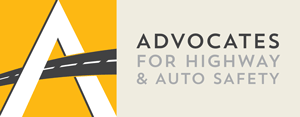FOR IMMEDIATE RELEASE: November 17, 2021
CONTACT: Pete Daniels / Advocates for Highway and Auto Safety / pdaniels@saferoads.org / 301-442-2249 (C)
U.S. House of Representatives Committee on Transportation and Infrastructure Hearing: “Industry and Labor Perspectives: A Further Look at North American Supply Chain Challenges”
Joint Statement on the Need to Prioritize Safety While Addressing Supply Chain Challenges
Crash fatalities on our roadways spiked dramatically during the first six months of 2021, surging past 20,000 according to the latest estimates from the National Highway Traffic Safety Administration (NHTSA). This is the largest six-month increase the agency has ever recorded in the history of the Fatality Analysis Reporting System (FARS). The data points to a rise in risky driving behaviors including lack of seat belt use and speeding. It also suggests that other dangerous behaviors, such as impaired driving, may be continuing an upward trend experienced last year. Our nation’s leaders should be taking swift action to make our roads safer for all road users, especially those whose “offices” are on the roadways such as truck drivers. As the U.S. House of Representatives Committee on Transportation and Infrastructure holds this important hearing on supply chain challenges, stakeholders who are not testifying want to raise awareness that addressing the movement of goods must be considered holistically for the betterment of commerce efficiency and safety.
Cathy Chase, President, Advocates for Highway and Auto Safety: “As Secretary of Transportation Pete Buttigieg noted recently, truck driving is facing a retention crisis. Truck driving is one of the most dangerous occupations in the U.S., according to the Bureau of Labor Statistics, and nearly 5,000 people were killed in crashes involving a large truck in 2020. It’s, therefore, unsurprising that the turnover rates for this industry can be as high as 90 percent. Yet, the same demands from some segments of the trucking industry keep being pushed year after year and decade after decade, way before the current supply chain crunch arose: green-light inexperienced, risk-prone teenagers to be behind the wheel of 80,000-pound trucks traveling throughout the country; compel truck drivers to exceed their physical limits risking fatigue-related crashes; allow bigger and heavier trucks on our stressed bridges and roads; and, the latest – eviscerate some safety protections to allow for mass deployment of unproven, unregulated autonomous commercial motor vehicles. All of these proposed ‘solutions’ to complex and multi-faceted supply chain problems will have predictable impacts on our roadways: death of road users and destruction of infrastructure. We commend the Transportation and Infrastructure Committee for its safety policy improvements in the INVEST in America Act and urge its members, Congress and the Administration to advance policies that truly prioritize safety while addressing supply chain logjams.”
Joan Claybrook, former Administrator of the National Highway Traffic Safety Administration (NHTSA) and Chair of Citizens for Reliable and Safe Highways (CRASH): “For decades, special interests have attempted to degrade and decimate truck safety rules which protect drivers and all road users. They also have continued to sideline and stymie sensible safety regulations such as collision avoidance technology for all new commercial motor vehicles (CMVs). The House-passed INVEST in America Act, led by House Transportation and Infrastructure Committee Chairman Peter DeFazio (D-OR), turned the tide on this erosion and obstruction of overdue safety advances. The Infrastructure Investment and Jobs Act, signed into law this week, included some of these essential reforms, including automatic emergency braking (AEB) for new large trucks and an upgrade of the rear underride guard standard. We will press the U.S. Department of Transportation to swiftly implement critical safety mandates, particularly the rulemaking on AEB and ensure it covers all new vehicles. Improving safety, upgrading our nation’s infrastructure and realizing efficiency in the supply chain are all complementary and achievable goals. On the contrary, tapping into the inexperienced and dangerous teenage driving population for drivers, raising federal truck size and weight limits that will further degrade bridges and highways, and forcing drivers to drive even more excessive hours on the road, already a major source of horrific crashes, will set our country on the wrong course of action now and for years to come.”
Stephen W. Hargarten, MD, MPH, Society for the Advancement of Violence and Injury Research: “Physicians and health care professionals witness the traumatic impact of crashes involving large trucks every day in emergency rooms across the country. Tragically, fatal crashes involving a large truck and a passenger vehicle almost always (97%) result in the deaths of the car occupants. These experiences have spurred many in the medical community to advocate for proven safety technology upgrades and sensible safety rules to prevent crashes, injuries and deaths. It is disturbing and disheartening that existing truck safety protections continue to face a barrage of attacks. I urge Congress and the Biden administration to reject anti-safety proposals that would further imperil motorists and truck drivers and instead prioritize proactive safety policies as it considers responses to current supply chain challenges.”
James P. Hoffa, General President, International Brotherhood of Teamsters: “The trucking industry doesn’t have a driver shortage problem. The real problem is a shortage of motor carriers that won’t pay drivers fair wages and benefits and provide decent working conditions. And the answer isn’t loosening restrictions to put teen drivers behind the wheel who are less experienced, are far more likely to get into fatal accidents, and are more susceptible to exploitation by their employers.”
Dawn King, President, Truck Safety Coalition (TSC) (Michigan) and Daughter of Bill Badger who was killed by a tired trucker in 2004: “Experience and numerous crash investigations by the National Transportation Safety Board (NTSB) show that driver fatigue is a dangerous and deadly problem in the trucking industry. Long workdays, excessive driving hours, and unreasonable delivery demands jeopardize the safety of truck drivers and motorists. Everyday families like mine pay the price when a tired trucker falls asleep behind the wheel and crashes. Gutting important federal truck safety rules to allow even more hours of driving and work will not solve the supply chain problem. But, it will sacrifice safety and lead to even more needless deaths and injuries.”
Ed Slattery, Former Board Member and Current Volunteer, Truck Safety Coalition (TSC) (Maryland) and Husband of Susan Slattery who was killed in a crash with a tired trucker in 2010 and whose sons Peter and Matthew sustained severe injuries: “The bigger the truck, the bigger the safety problem. My life was changed forever when the car my family was traveling in was rear-ended by an oversized truck. My wife was killed instantly and my surviving youngest son suffers from lifelong catastrophic injuries sustained in the crash. Heavier trucks have longer stopping distances and are more difficult to control on our roads, especially at high speeds and in traffic. Studies consistently show that passenger vehicles are no match for the destruction caused by a large truck in a crash. Relaxing current limits and allowing bigger and heavier trucks will not only destroy our roads and bridges but will destroy more families like mine when crashes do occur.”
Russ Swift, Co-Chair, Parents Against Tired Truckers (P.A.T.T.) (Florida) and Father of Jasen Swift who was killed in a truck crash with a teen driver in 1993: “Allowing teens to drive big rigs across state borders in the face of research showing that this age group has significantly higher fatal crash rates is reckless and dangerous. An empty store shelf is not as tragic as an empty chair at Christmas dinner because your loved one needlessly died in a crash caused by a teen trucker.”
The U.S. House Committee on Transportation and Infrastructure hearing on November 17 is “Industry and Labor Perspectives: A Further Look at North American Supply Chain Challenges.” To read Advocates’ written testimony submitted for the hearing record CLICK HERE.
Advocates for Highway and Auto Safety is an alliance of consumer, medical, public health, law enforcement, and safety groups and insurance companies and agents working together to improve road safety in the U.S. Advocates’ mission is the adoption of federal and state laws, policies and programs that prevent motor vehicle crashes, save lives, reduce injuries, and contain costs.
###

